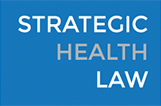Top of Mind Tuesday: Medicare Advantage Snapshot

By Elizabeth B. Lippincott
In 2004, when I started focusing on Medicare plans in preparation for the 2006 implementation of Medicare Part D prescription drug benefits, only a small percentage of Medicare beneficiaries—just 13 percent or roughly 5.3 million people—were enrolled in what were then called Medicare+Choice plans.[1] Fast-forward 16 years, now 39 percent of all Medicare beneficiaries, or 24.1 million people out of roughly 62 million Medicare beneficiaries overall, are enrolled in Medicare Advantage (MA) plans.[2] The Congressional Budget Office projects the share of beneficiaries enrolled in MA plans will rise to over 50 percent by 2030.[3]
What’s driving the sustained increase in MA enrollment? To start, MA plans are cost-effective when compared with other options, such as purchasing Medicare Supplemental (or Medigap) insurance. The significance of this factor to consumers concerned about monthly premium expense cannot be overstated. Roughly 60 percent of MA enrollees with prescription drug coverage pay no premium (other than their Part B premium), and for those with a premium for MA and Part D drug coverage, the average monthly bill is $63 per month total, including drug benefits. Compare that monthly cost with the combined premium for people with Original Medicare to purchase (1) a standalone Part D Prescription Drug Plan, which cost $38 per month on average in 2020,[4] and (2) an individual Medicare Supplemental policy, with premiums often ranging from $70 to $270 per month. It’s not hard to see why so many people choose Medicare Advantage plans.
We also see cost-consciousness in consumer behavior when it comes to choosing MA plans. Medicare Advantage health maintenance organizations (HMOs) attract the largest percentage of enrollees, with almost twice the percentage of enrollees choosing HMO over preferred provider organization (PPO) plans.[5] The average out-of-pocket limit for in-network services in MA HMO plans was $4,486 in 2020, while for PPO plans, the average out-of-network cost sharing cap for medical benefits in PPO plans was $8,828.[6]
What should healthcare lawyers and others watch for as the MA program continues to mature? We expect continued growth in Special Needs Plans (SNPs), especially those for people dually eligible for Medicaid and Medicare (D-SNP) plans. In 2020, more than 3 million beneficiaries were enrolled in SNPs, with most of those in D-SNPs.[7] Additionally, with the substantial expansion of flexibility in supplemental benefits in MA plans over the past few years, we anticipate continued competition for enrollees as well as tighter federal regulation and oversight in this area.
On a personal note, that Medicare implementation project I took on in 2004 turned out to be a significant turning point in my career, as the field continues to offer new and interesting developments more than fifteen years later.
[1] “A Dozen Facts About Medicare Advantage in 2020,” Kaiser Family Foundation (Jan. 13, 2021), available at https://www.kff.org/medicare/issue-brief/a-dozen-facts-about-medicare-advantage-in-2020/.
[2] Id.
[3] Id.
[4] “Medicare Part D: A First Look at Medicare Prescription Drug Plans in 2021,” Kaiser Family Foundation (Oct. 29, 2020), available at https://www.kff.org/medicare/issue-brief/medicare-part-d-a-first-look-at-medicare-prescription-drug-plans-in-2021/.
[5] “Medicare Advantage HMOs Remain Popular in 2021 Open Enrollment,” Health Payer Intelligence (Oct. 13, 2020), available at https://healthpayerintelligence.com/news/medicare-advantage-hmos-remain-popular-in-2021-open-enrollment.
[6] “A Dozen Facts About Medicare Advantage in 2020,” supra note 1.
[7] Id.




